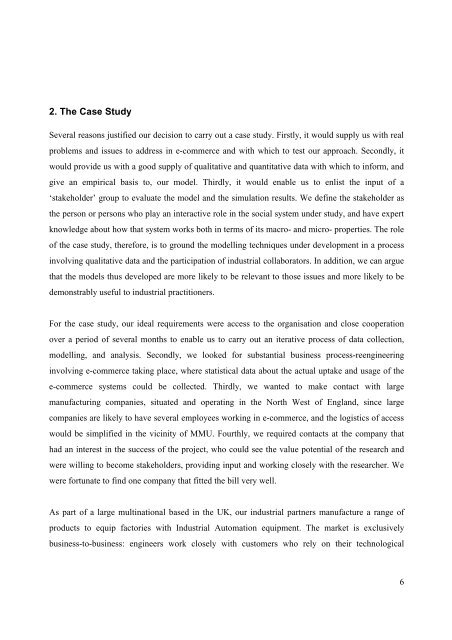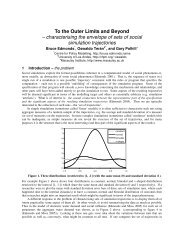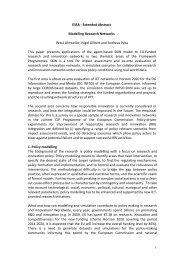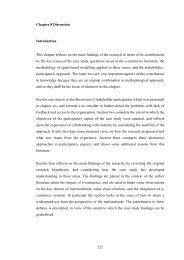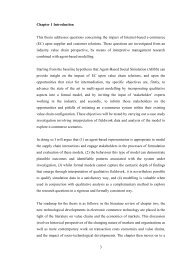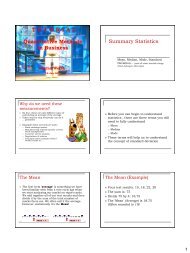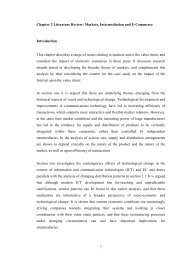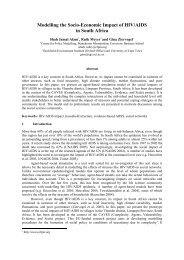1 Agent-Based Modelling Incorporating Qualitative and Quantitative ...
1 Agent-Based Modelling Incorporating Qualitative and Quantitative ...
1 Agent-Based Modelling Incorporating Qualitative and Quantitative ...
Create successful ePaper yourself
Turn your PDF publications into a flip-book with our unique Google optimized e-Paper software.
2. The Case Study<br />
Several reasons justified our decision to carry out a case study. Firstly, it would supply us with real<br />
problems <strong>and</strong> issues to address in e-commerce <strong>and</strong> with which to test our approach. Secondly, it<br />
would provide us with a good supply of qualitative <strong>and</strong> quantitative data with which to inform, <strong>and</strong><br />
give an empirical basis to, our model. Thirdly, it would enable us to enlist the input of a<br />
‘stakeholder’ group to evaluate the model <strong>and</strong> the simulation results. We define the stakeholder as<br />
the person or persons who play an interactive role in the social system under study, <strong>and</strong> have expert<br />
knowledge about how that system works both in terms of its macro- <strong>and</strong> micro- properties. The role<br />
of the case study, therefore, is to ground the modelling techniques under development in a process<br />
involving qualitative data <strong>and</strong> the participation of industrial collaborators. In addition, we can argue<br />
that the models thus developed are more likely to be relevant to those issues <strong>and</strong> more likely to be<br />
demonstrably useful to industrial practitioners.<br />
For the case study, our ideal requirements were access to the organisation <strong>and</strong> close cooperation<br />
over a period of several months to enable us to carry out an iterative process of data collection,<br />
modelling, <strong>and</strong> analysis. Secondly, we looked for substantial business process-reengineering<br />
involving e-commerce taking place, where statistical data about the actual uptake <strong>and</strong> usage of the<br />
e-commerce systems could be collected. Thirdly, we wanted to make contact with large<br />
manufacturing companies, situated <strong>and</strong> operating in the North West of Engl<strong>and</strong>, since large<br />
companies are likely to have several employees working in e-commerce, <strong>and</strong> the logistics of access<br />
would be simplified in the vicinity of MMU. Fourthly, we required contacts at the company that<br />
had an interest in the success of the project, who could see the value potential of the research <strong>and</strong><br />
were willing to become stakeholders, providing input <strong>and</strong> working closely with the researcher. We<br />
were fortunate to find one company that fitted the bill very well.<br />
As part of a large multinational based in the UK, our industrial partners manufacture a range of<br />
products to equip factories with Industrial Automation equipment. The market is exclusively<br />
business-to-business: engineers work closely with customers who rely on their technological<br />
6


